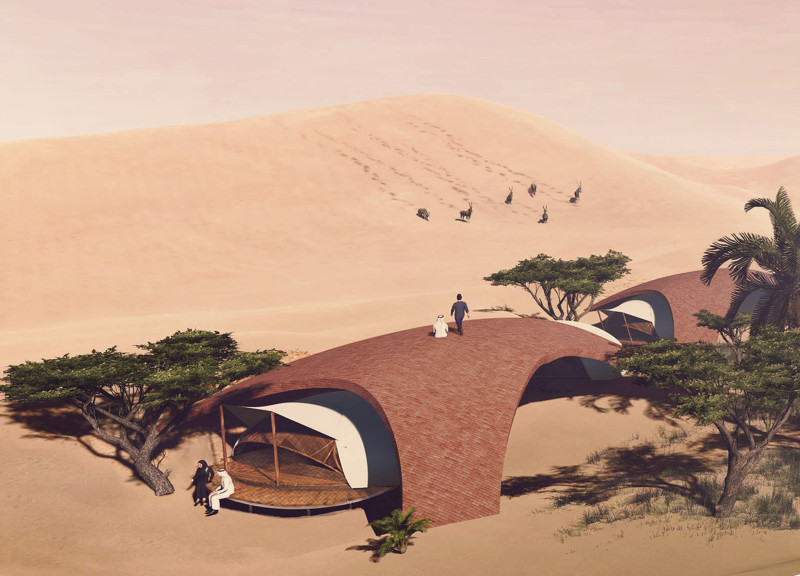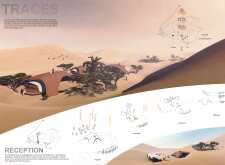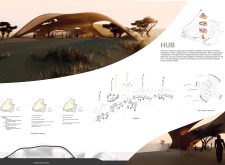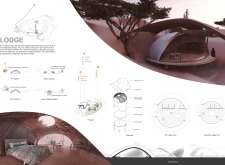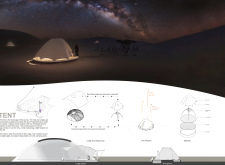5 key facts about this project
The Traces project is an architectural endeavor located in the Empty Quarter, designed to harmonize with its desert environment and reflect the cultural heritage of the Bedouin people. The project is comprised of three main structures: the Reception, the Hub, and the Lodge. Each structure serves distinct functions while emphasizing adaptability and sustainability, which are integral to both the design and the experience it offers.
The Reception serves as the entry point to the site, guiding visitors from urban settings into the vastness of the desert. It is strategically placed to provide orientation before visitors begin their journey deeper into the landscape, often via traditional modes of travel like camel rides. The Hub functions as a communal space where various activities occur, accommodating gatherings and events in a flexible environment. The Lodge is designed for comfortable living, offering modular spaces that cater to different user needs and reflect the principles of dynamic living, mirroring traditional Bedouin architecture.
Unique Design Approaches Rooted in Culture and Environment
The Traces project stands out due to its integration of traditional Bedouin concepts with modern architectural practices. The design encapsulates the nomadic lifestyle through its fluid, adaptable forms, evident in the shapes and layouts of the structures. For instance, the undulating rooflines of the Hub mimic the dunes of the desert, blurring the boundaries between the built environment and the natural landscape.
Sustainability is a fundamental aspect of the project. It employs a variety of environmentally responsible materials, including Dacron fabric for coverings, wooden posts for structural support, and palm frond cages that resonate with the local context. The inclusion of photovoltaic systems for solar energy generation and rainwater harvesting underscores a commitment to ecological responsibility, essential for a project situated in a resource-scarce environment.
Architectural Strategies and Functional Details
The project embodies several architectural strategies that promote user interaction with the environment. Open-air layouts maximize natural ventilation and light, creating a comfortable atmosphere while minimizing reliance on artificial systems. The connection between indoor and outdoor areas encourages an appreciation of the surrounding desert landscape, allowing for recreational activities and social engagement in a natural setting.
The careful selection of materials is critical to the project’s success. Among the prominent materials are ETFE membranes that provide protection while allowing natural light to filter through, and steel grates that offer durability in response to the unique challenges presented by the shifting sands. These choices reflect an understanding of both local climate conditions and cultural references.
The Traces project is a well-rounded exploration of architecture that honors its cultural context while addressing modern needs and environmental concerns. For those interested in gaining deeper insights, it is advisable to explore the architectural plans, architectural sections, and detailed architectural designs that further elaborate on the project's innovative ideas. These elements lay bare the thought processes behind the design and provide a clearer understanding of how such a project operates within its unique setting.


